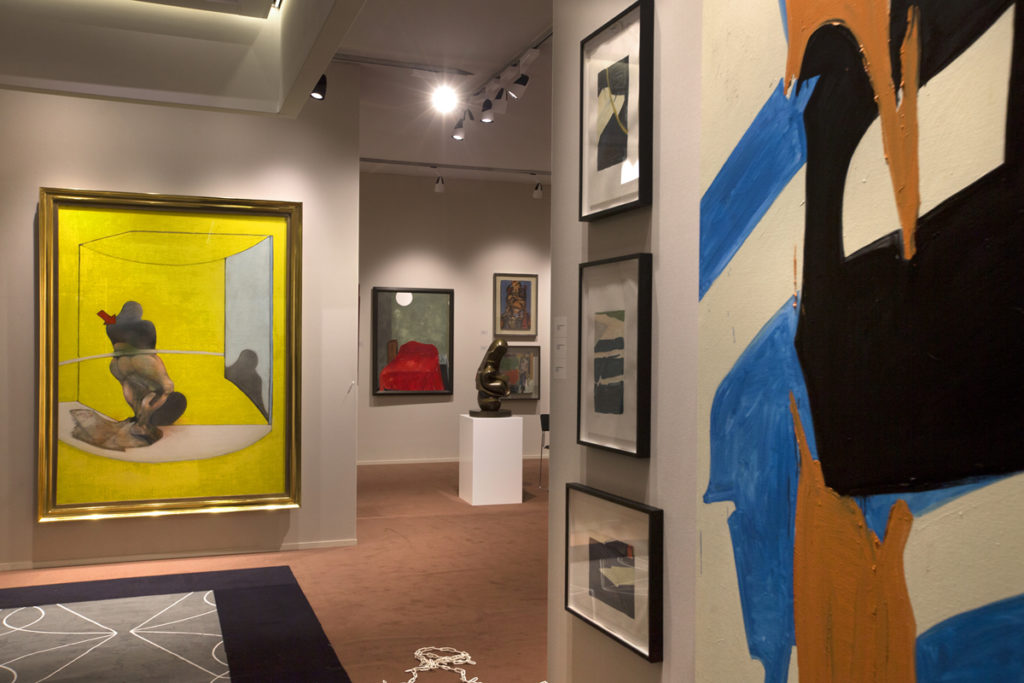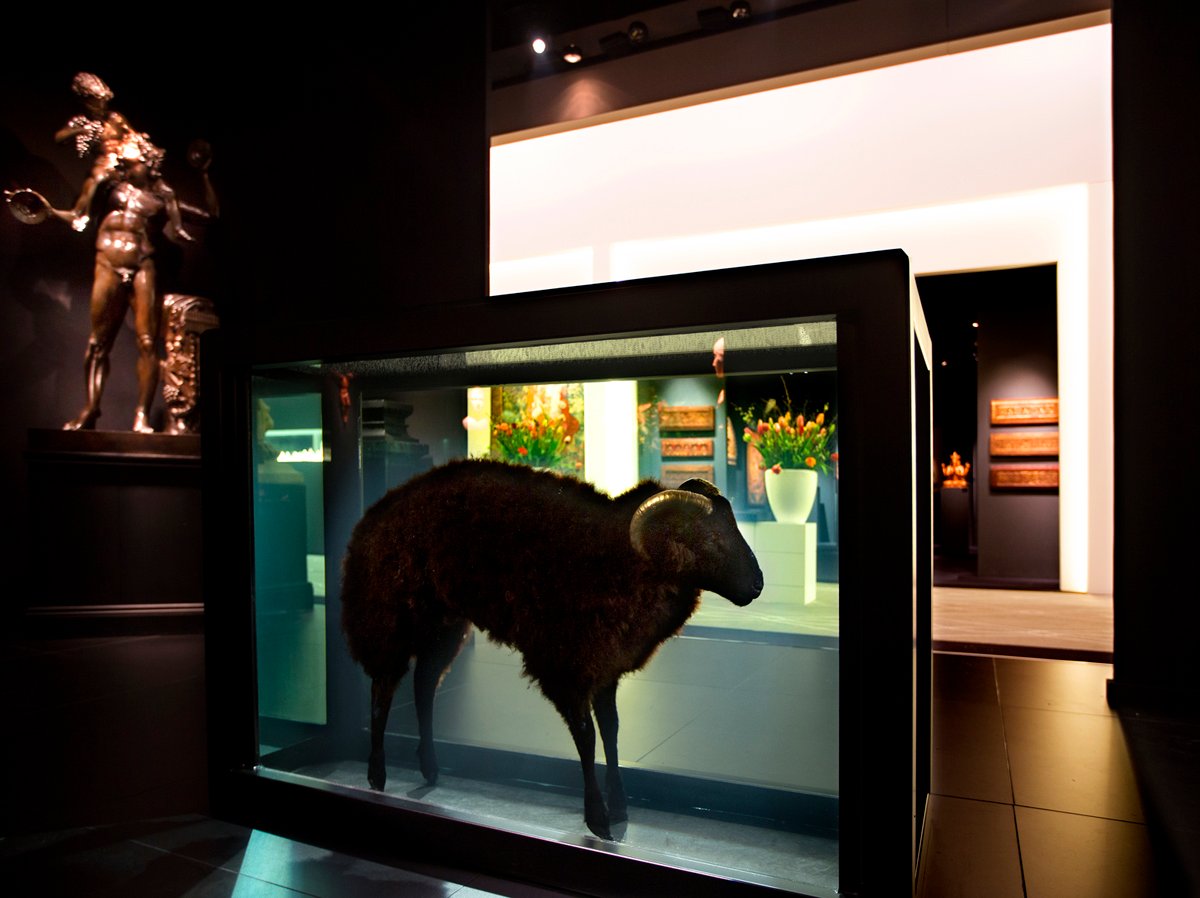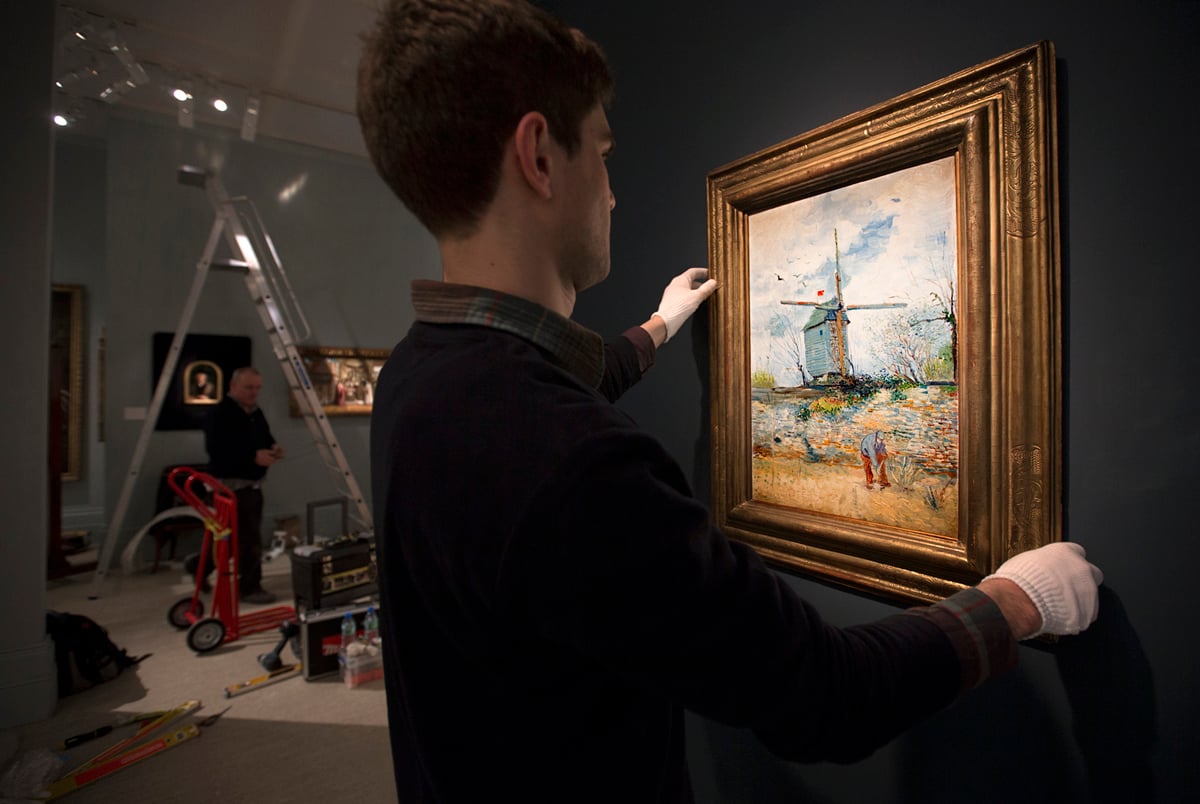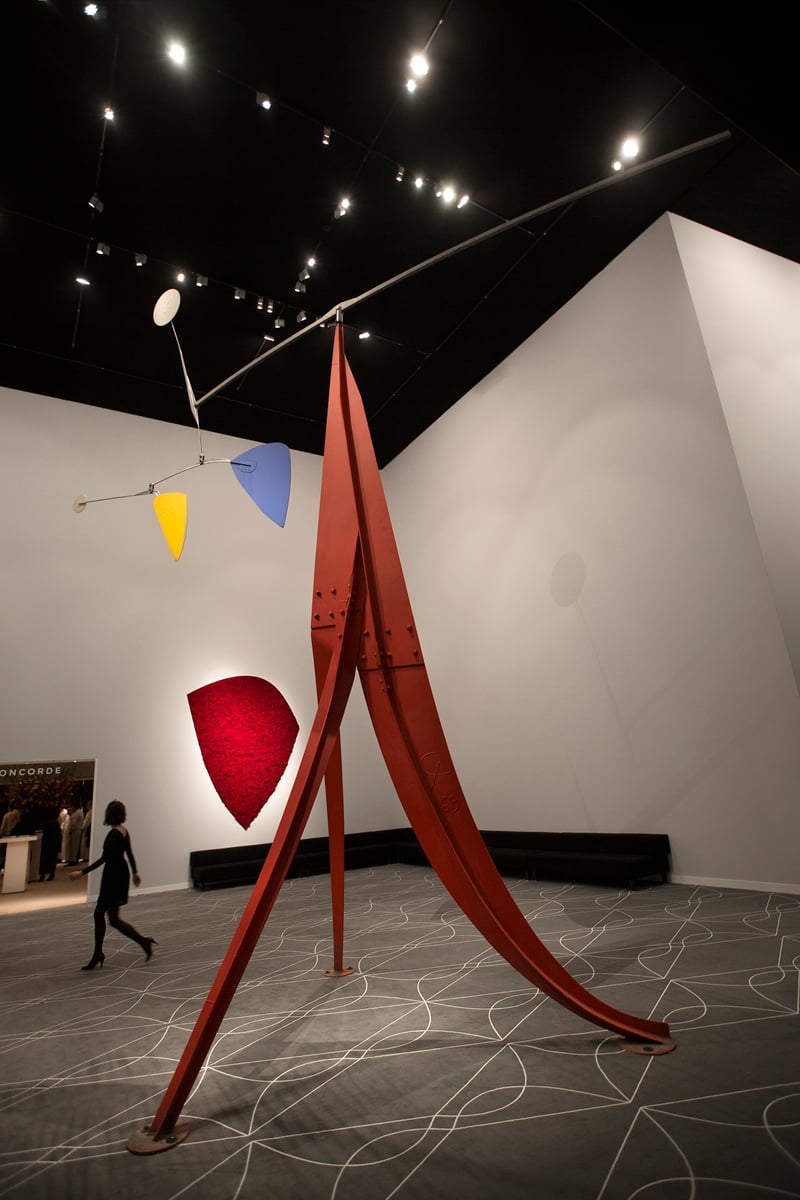Analysis
TEFAF 2014: Sales Swift, Confidence High at the Mother of All Art Fairs
A buoyant mood reigned at TEFAF as collectors and artists browsed €4 billion of art.

A buoyant mood reigned at TEFAF as collectors and artists browsed €4 billion of art.

Coline Milliard

MAASTRICHT, The Netherlands—More than 10,000 VIPs made their way to the European Fine Art Fair (TEFAF) on Thursday. Artists Anish Kapoor and Georg Baselitz, Frieze Art Fair co-director Matthew Slotover and Frieze Masters director Victoria Siddall, as well as Alexander Pechtold, leader of the Netherlands’ Democrats 66 party, and Dutch designer Jan Taminiau, were among the crowd sipping champagne as they browsed art, design, and jewelry collectively worth an estimated €4 billion (US$5.54 billion).
The country’s second most important art museum, the Gemeentemuseum in The Hague, was among the first to announce a purchase: a small landscape painting, View of Lausanne (circa 1870), by the Dutch painter Matthijs Maris. The piece was bought from the London and Amsterdam-based dealer Douwes Fine Art.
“Nobody knew where it was, and I found it here, at TEFAF,” the Gemeentemuseum’s director Benno Tempel, told artnet News, beaming. “I’m still a bit shaky.” He declined to reveal the selling price, but boasted about the quality of the piece, which had been in a European collection for 80 years.
Tempel’s find, and his enthusiasm, characterize much of the spirit of this 2014 edition, which is open until March 23. It gathers 274 exhibitors—a record—and over 30,000 objects, including several major pieces fresh to the market. Every item has passed a stringent vetting process.
“Institutions come here and they bring their benefactors,” says dealer James Hennessy, from the London– and New York–based gallery Littleton and Hennessy Asian Art. “They have the best of all worlds to choose from. It’s like a one-stop shop. And dealers usually save their best pieces for TEFAF.”
Hennessy is showing a 700-year old Chinese porcelain dish, new to the market and priced at €15–16 million (US$20.5–21.8 million). Dating from the Yuan dynasty (1279–1368) and made by craftsmen at Jingdezhen in Jiangxi Province, it is one of only three known works of its kind. The other two are in the collections of the National Museum of Iran and the Topkapi Saray Museum in Istanbul.
Hennessy is hoping the dish will go to a museum. “It’s always great if these things are available for the public to see,” he says. “That’s why we were very keen on bringing it to Maastricht.”
Many institutional representatives—this year including staff from the Metropolitan Museum of Art in New York, the Museum of Fine Arts, Boston, and the Rijksmuseum—are regulars. And several major collectors have made TEFAF their only fair outing of the year.
“There are people here we don’t see anywhere else in the world,” a dealer confides.
Buying at TEFAF is often a slower affair than at some other fairs, particularly those specializing in contemporary art. Seasoned connoisseurs think twice before parting with their millions. And the pace is further encouraged by the exceptionally long duration of the event.
Yet brisk sales were recorded across the board yesterday. London’s Marlborough Fine Art had yet to find a buyer for its eye-catching, yellow Francis Bacon, Study from the Human Body (1986). Priced at approximately US$25 million, the work is among the most expensive pieces on display at TEFAF. However, Marlborough did report a slew of sales in the first few hours of the fair.
“It’s been a busy day, and it’s not usually a day for sales,” commented Marlborough’s Andrew Renton. Among the first pieces to be snapped up were a small, green, Frank Auerbach painting, Figure Seated on a Bed from 1969 (asking price: £200,000), a fetching head sculpture with butterflies by Manolo Valdés, Luna (2012), priced at €230,000 (US$319,383), as well as a stunning Kurt Schwitters collage, Für Hartmann (1922), priced at €280,000 (US$388,958).
Most of these sales were to European collectors. This reflects the bulk of the buying force at TEFAF, still mainly split between Europe and the US. Groups from emerging markets such as Russia and mainland China also made the trip.
The talk of the fair were the four pieces by Damien Hirst at London and Leeds’ antique and Renaissance dealers Tomasso Brothers Fine Art. Hirst himself came to TEFAF for the first time on Monday, and he was, says Dino Tomasso, “extremely enthusiastic about the antiques at the fair.”
The dealer explains he grew up with Hirst. “Damien was bright as a button,” he reminisces, musing that he might do more displays mixing ancient and contemporary art in the future. For now, the star of the booth is a black ram in formaldehyde, Black Sheep with Golden Horns (2009), priced at £2,250,000 (US$3,740,241).
When artnet News asked how the relative unpopularity of Hirst’s recent works—especially compared to his earlier pieces—might affect the success of the presentation, Tomasso answered: “I’m not actually aware that Damien’s work is not as popular as it was.”
Like the other Hirst pieces on display—including a silver cast of a conjoined-twin calves’ skeleton and the collage of insects Styx (2013)—the pickled ram is yet to find a new home. But by the end of the day, the Tomasso Brothers had placed three works of their more usual stock, including a spectacular, Roman janiform herm, which sold for €275,000 (US$381,000) to a European collector.

The stand of Tomasso Brothers Fine Art, featuring works by Damien Hirst.
Photo: Harry Heuts.
Released on Wednesday, TEFAF’s annual art market report claims the industry grossed a total of €47.4 billion (US$65.82) last year, making 2013 the market’s most successful year since 2007. This could well have contributed to the general feeling of confidence. A bullish market has also led to an abundance of long-unseen works reemerging onto the market, as owners perceive its legs to be strong enough to carry their masterpieces into new hands.
Among these was a spectacular Lucretia (after 1537) by Lucas Cranach the Younger. When it was acquired by London’s Weiss Gallery, the piece was heavily repainted and its attribution was unclear. Restoration work led to its confirmation as the work of the German Renaissance artist, and a price tag that goes with it: €2–2.5 million (US$2,778,500–3,473,183). A sale was being negotiated at time of writing.
Weiss Gallery still had a good day on Thursday, selling three pieces including a striking portrait, Madeleine Le Clerc (1570-72) by François Clouet, one of the artist’s rare surviving works. The asking price was US$1 million. The piece has gone to an American collection.
Much publicized recently, Vincent van Gogh’s Moulin de la Galette (1887) stands proudly at the booth of London- and New York-based gallery Dickinson. The piece features the signature of the artist and was last seen in public in New York in 1965. The asking price is “in the 8 figures,” according to the gallery’s otherwise tight-lipped Emma Ward. It is the fourth time Dickinson has brought a van Gogh to TEFAF. Ward wouldn’t say whether those previous works had sold during their respective outings at the fair, but she smiled confidently: “we’ve got a good track record.”
The most recent van Gogh oil on canvas to go under the hammer was L’Homme est en mer (1889). It was unsigned and sold at Sotheby’s Modern and Surrealist Art evening sale in London last month for £16,882,500 (US$27,527,311).

Building up TEFAF2014, Van Gogh’s Moulin de la Galette (1887).
Photo: Harry Heuts.
In 2012 the market saw a “flight to safety” among collectors, who chose to invest in known entities. And with speculation now ripe at the young end of the contemporary art market, one might be tempted to think this cautious attitude will soon be a thing of the past. Not at TEFAF.
“In a fair like this, people want things they know,” comments a dealer.
Bowman Sculpture was rewarded for its extraordinary display dedicated to Auguste Rodin, selling the Vase of the Titans (1877) for £280,000 (US$465,360).
According to TEFAF’s art market report, postwar and contemporary art now represents 46 percent of the market as a whole. One can’t help but notice that TEFAF embraces the trend: since the fair’s silver jubilee in 2012, a large modern or contemporary artwork has graced the entrance hall.
This year, a monumental stabile by Alexander Calder, Janey Waney (1969)—until recently exhibited in New York’s Gramercy Park—sets the tone. Madison Avenue’s Van de Weghe Fine Art hopes to get US$20 million for the spectacular piece of outdoor sculpture. It was still up for grabs at press time. By the end of play yesterday, the dealer had already sold a Pablo Picasso drawing, Tête Couronnée (1960), for US$485,000 to a European collector.
François Laffanour, from Paris’s Galerie Downtown François Laffanour, summed up the mood: “People come here to buy.” And with eight days still to go, more major sales are sure to be announced soon.

Alexander Calder, Janey Waney (1969).
Photo: Harry Heuts.